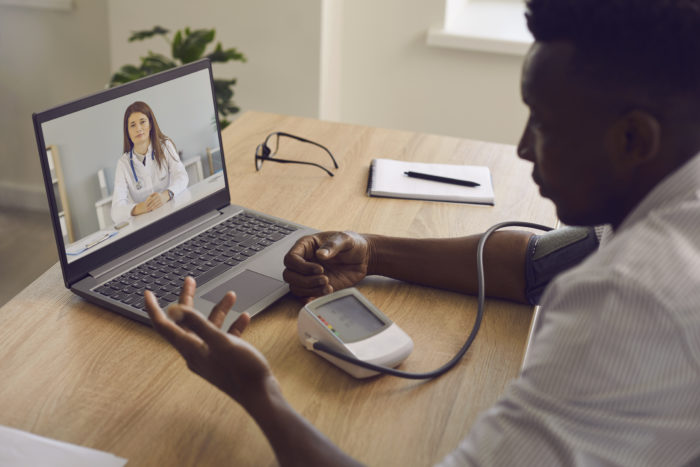I Was a Telehealth Skeptic
June 10, 2021
By Jan McAlister, DNP, APRN
Even the biggest skeptic can be converted into a ferocious advocate. I know from first-hand experience.

When the pandemic hit, I was doubtful when it came to telemedicine and questioned the quality of care. I am a nurse practitioner among a team of health care providers who are dedicated to improving health outcomes for women who have heart disease or are high risk. The health system I work for prides itself on being innovative, so I am familiar with trying new approaches. I heard telehealth could be life-changing, but for me, it took seeing it to believe. Now, it’s my mission to make sure access to care includes the option of a virtual visit for every patient.
Limiting in-person visits due to pandemic essentially cut off access to care for some patients. I, along with a team of other providers, began a telehealth pilot program serving those individuals. We needed to continue reaching high-risk patients with our cardiac prevention services despite COVID-19. The pilot allowed us to connect with those patients, to educate them while respecting their hesitation about coming into the clinic.
We initiated a system that allowed patients to video chat with health care providers using their established patient portal or even through their telephone.
Seeing each other through the computer was important in many instances. For example, it allowed me to show, not just tell, patients how to self-inject their new cholesterol-lowering medication. Most everyone can swallow a pill, but injecting oneself is a bit more intense. Many patients doubted they could do it. Yet, with a bit of coaching and a step-by-step demonstration, every patient I’ve worked with virtually has overcome their apprehension.
A year ago, I didn’t think that I could provide optimal care using telehealth. Not only was I wrong, but now I can’t imagine not having it as one of the tools in our toolbox.
Telehealth has enormous potential to reach patients who may be challenged to make an in-person visit because of transportation, child care, work schedules or time. It allows us, as providers, to help patients address their health without jeopardizing other priorities.
Just as my patients and I overcame our concerns about initiating telehealth, insurers and policymakers must now overcome their concerns about its continued use. It shouldn’t be viewed as just a temporary solution. Telehealth should remain a critical part of patient-centered care in a post-pandemic world.
Now is not the time to pump the breaks on progress. Instead, we must keep our foot on the gas by advocating for policies that support long-term use of telehealth, such as payment parity for virtual and in-person visits. Doing so will allow providers like me to reach more patients, and ultimately, save more lives.

Jan McAlister, DNP, APRN, works at Piedmont Heart Institute in Georgia and is a member of the Partnership to Advance Cardiovascular Health.
Tags: TelehealthCategorized in: Blog

